Many gardeners dream of a lush, green lawn, but the reality of sandy soil can make this seem challenging.
Sandy soil, prevalent in numerous regions, is often thought to be less than ideal for growing grass due to its quick-draining nature.
However, certain grass types can thrive in these conditions.
This article explores the most suitable grass for sandy soils.
Understanding the characteristics of sandy soil is key to selecting the right grass.
Let’s delve into what sandy soil is and how it can support a healthy lawn.
Understanding Sandy Soil for Lawn Care
Sandy soil typically contains a significant portion of sand (about 35%) and lesser amounts of silt and clay (less than 15%).
This type of soil is characterized by larger, coarse particles.
Often referred to as light soil, sandy soil is known for its dry, nutrient-rich, and quick-draining properties.
It possesses a loose structure and avoids becoming sticky or clumpy.
To determine if your lawn has sandy soil, a simple tactile test can be conducted.
Take a small amount of soil and roll it between your fingers.
Sandy soil will feel gritty, and you’ll notice its inability to hold shape or form clumps.
This texture test is crucial in identifying the soil type, which is a critical step in selecting the appropriate grass for sandy soils.
Choosing the Right Grass for Sandy Soils
While sandy soil presents challenges for plant growth, including grass, due to its poor water retention and loose structure, certain grass types are well-suited to these conditions.
The key challenge lies in the soil’s inability to hold water and nutrients effectively, as the large, irregular sand particles create air pockets.
These factors can hinder root establishment and growth for many grass species.
However, not all is lost for lawns with sandy soils.
With careful selection and proper care, achieving a verdant lawn is possible.
Certain grass varieties have adapted to thrive in sandy soils, especially those that don’t require excessive moisture or nutrients.
Let’s explore the grass types particularly effective for sandy soil environments.
1. Fescue
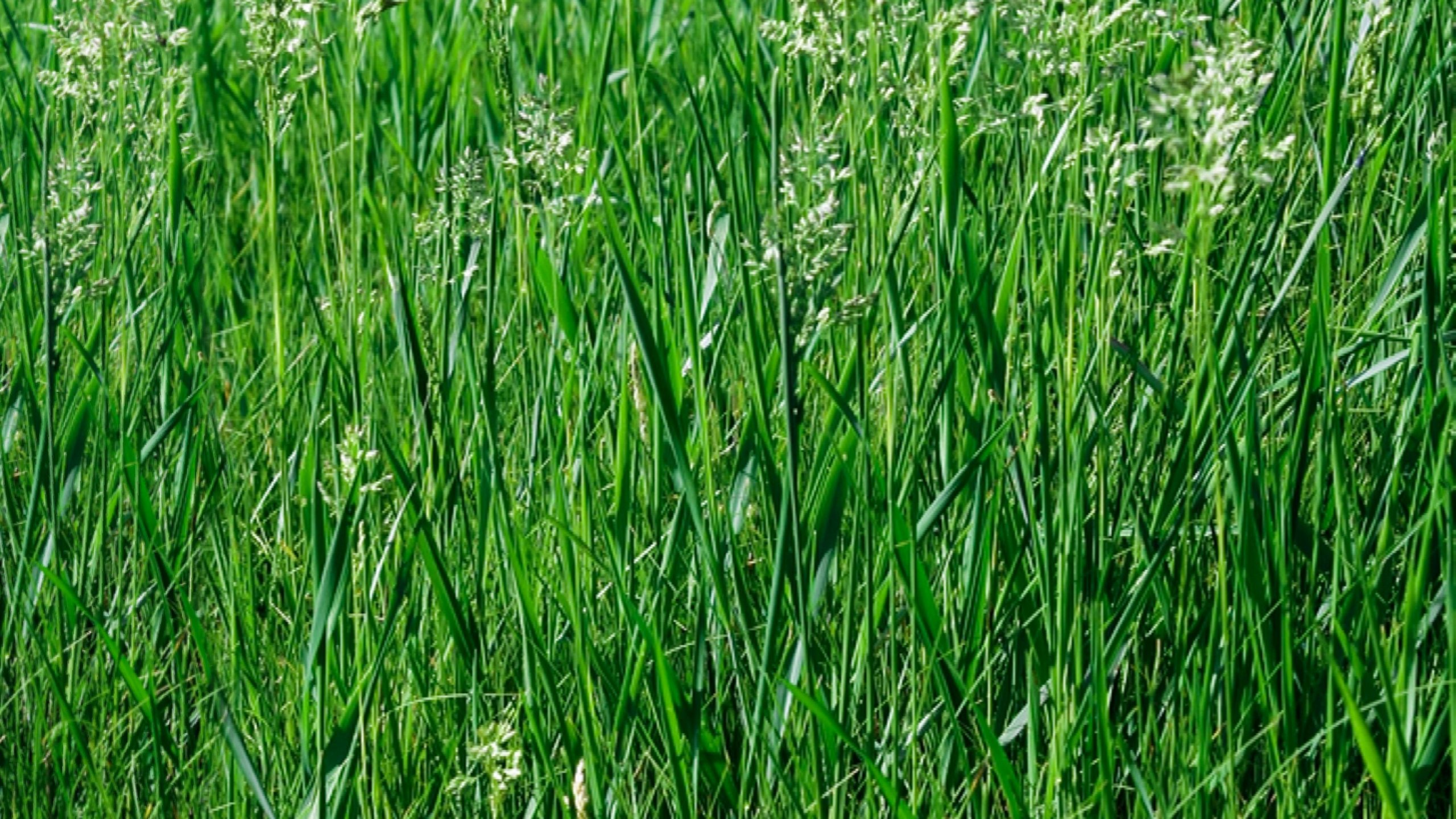
Fescue, a perennial, cold-season grass, is highly suitable for sandy soils.
This grass type prefers a pH range of 5.5 to 8.0, aligning well with the typical pH of sandy soil.
Fescue’s adaptability extends beyond sandy conditions, thriving in various soils, including gravel and pebble-based areas.
Fescue’s hardy nature allows it to sustain low water conditions due to its deep root system.
This grass is also remarkably resilient in shady areas, making it a great choice for lawns with varying light conditions.
Its thick growth pattern can efficiently cover empty patches, enhancing lawn aesthetics.
There are three main types of Fescue, each well-adapted to sandy soils:
- Creeping Red Fescue: Known for its low maintenance and slow growth, this variety spreads through underground rhizomes and stolons, offering excellent ground coverage.
- Tall Fescue: This variety is well-suited for shady areas and contributes a rich, green hue to the lawn. For best results, spread the seeds uniformly to ensure an even lawn appearance.
- Hard Fescue: Requiring minimal mowing and upkeep, hard fescue is drought-tolerant but less suited to high-temperature environments.
2. Zoysia Grass

Zoysia grass, originating from Asian countries, is a thin-bladed lawn grass well-suited to warm climates.
Unlike other warm-season grasses, Zoysia is notable for its resilience to foot traffic and ability to thrive in shaded areas.
With its deep root system, Zoysia is an excellent choice for sandy soils, offering drought tolerance and suitability for coastal areas. While Zoysia is low in water requirements, its growth rate can be slower.
Enhancing growth can be achieved by using nitrogen and phosphorus-rich fertilizers.
One consideration with Zoysia grass is its tendency to brown quickly after the season’s first frost, leading to a less vibrant lawn in winter.
However, it reliably regenerates to a bright green in the spring. Zoysia’s cold tolerance and dense sod formation make it a robust option for sandy soil environments, effectively resisting weed invasion.
3. Bermuda
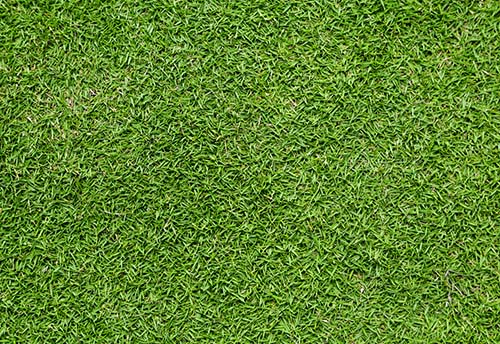
Bermuda grass, with its affinity for sunlight, is a top performer in sunny environments and remains lush and green for extended periods.
This thick, dark green grass excels in drought and flooding, making it a resilient choice.
Ideal for sandy soils, Bermuda grass flourishes in well-draining conditions and exhibits rapid growth, contrasting with the slower-growing Zoysia.
It is relatively low-maintenance, requiring minimal water.
However, Bermuda grass’s dependency on sunlight means it is less suitable for shaded lawns.
In areas lacking sufficient sunlight, Bermuda will struggle and may not achieve its full growth potential.
It enters a dormant state in winter but revives beautifully in spring.
Two notable Bermuda grass varieties are Yukon Bermuda and Riviera Bermuda, both thriving in sandy soils.
Bermuda’s adaptability extends to clayey soils, showcasing its versatility.
Also known as crabgrass, dog’s tooth grass, wiregrass, and devil’s grass, Bermuda is highly regarded for its quality, often used in sports grounds and for erosion control due to its robust growth.
4. Bahia
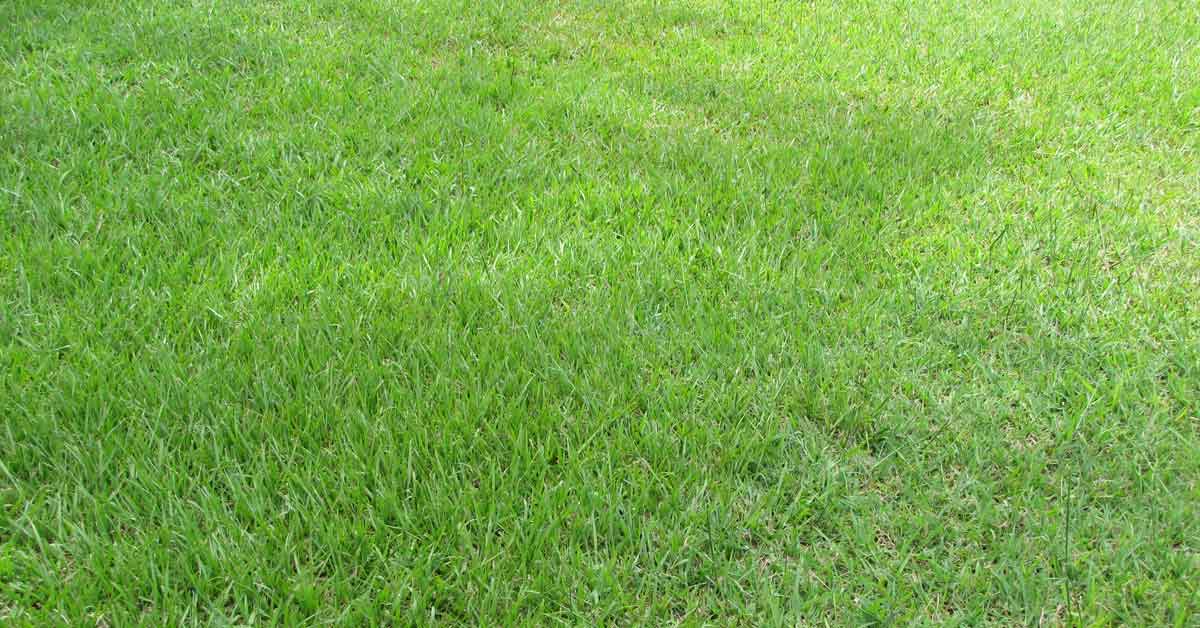
Bahia grass is another excellent option for sandy soils, thanks to its deep root system and exceptional tolerance to drought and heat.
Regular mowing of Bahia helps in spreading its seeds, facilitating a fuller lawn over time.
One of the key advantages of Bahia grass is its minimal requirements for water and fertilizers, making it an ideal choice for sandy soils.
This low-maintenance nature appeals to homeowners seeking an easy-to-care-for lawn.
However, Bahia does have some drawbacks. Its color is not as vibrant green as other grass varieties, presenting a lighter shade.
Additionally, its texture is somewhat coarse, and it may take longer to establish fully.
Bahia’s roots are disease-resistant, capable of growing dense and up to 12 feet, contributing to its stability and durability.
A unique characteristic of Bahia is its V-shaped seed head, which some may find less aesthetically pleasing.
These seed heads are self-reseeding, contributing to the grass’s propagation.
It’s important to note that Bahia turns brown during its dormant stage in winter, which may not be desirable for all lawns.
This aspect often makes Bahia a preferred choice for larger fields where visual appeal is less of a priority.
5. Centipede
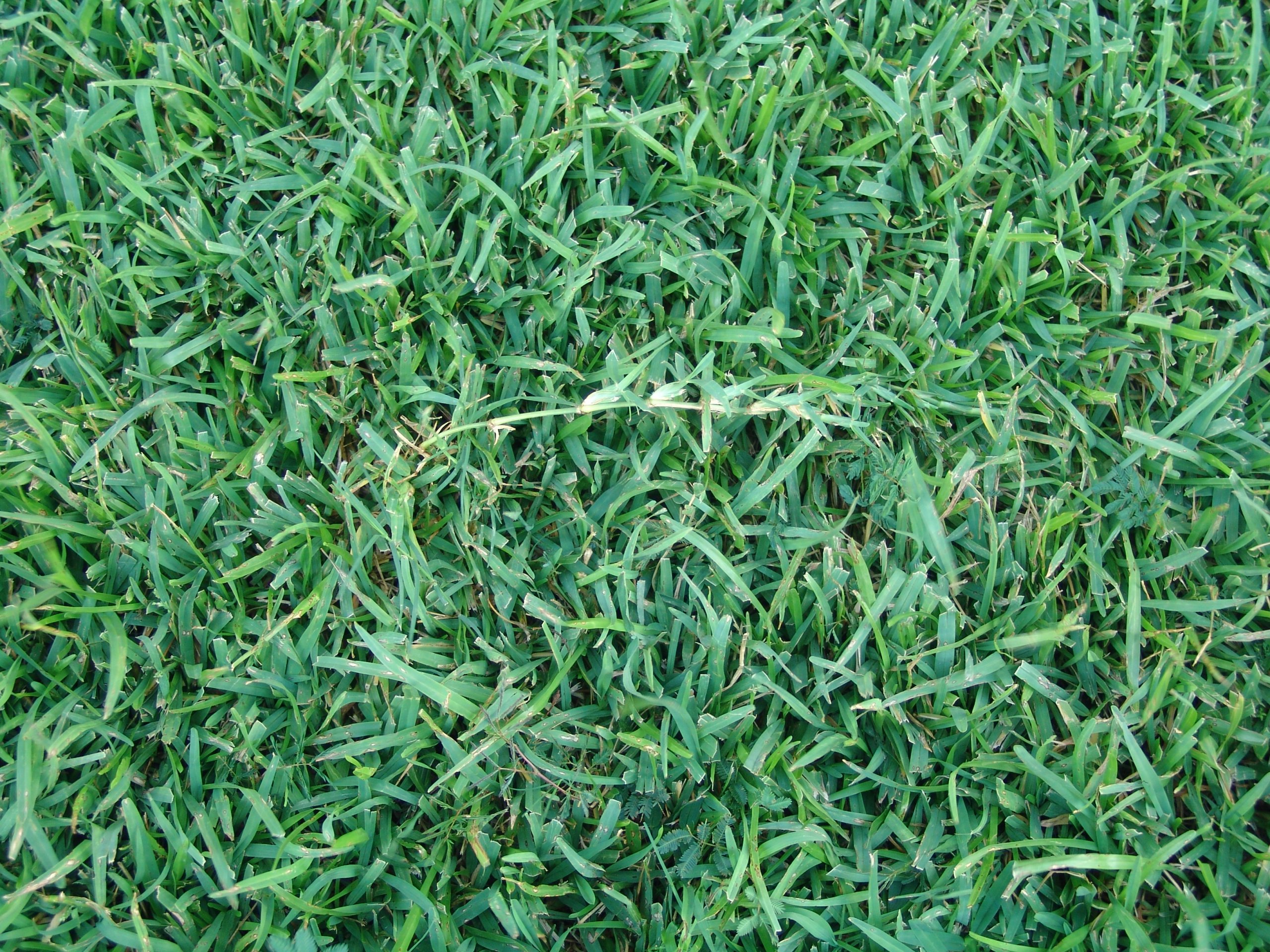
Centipede grass, known for its thick sod formation, is another suitable option for sandy soils.
It propagates through stolons, horizontal stems that branch out to create new plants, covering the ground effectively.
This grass variety has a slow growth rate and a coarse texture.
Like Bermuda grass, Centipede thrives in sunny conditions and struggles in shade.
If your lawn doesn’t receive ample sunlight, considering other grass varieties would be beneficial.
The unique growth pattern of its stolons, resembling centipedes, gives this grass its name.
Centipede’s compatibility with sandy soil comes from its ability to form a dense, carpet-like sod, countering the instability typical of sandy soils.
Its root system is efficient at trapping nutrients and moisture, making it a viable choice for sandy soil conditions.
It’s important to note that Centipede grass requires more water compared to the other grass varieties discussed in this article.
While it’s less hardy and only tolerates light frost, its light green color adds a pleasant hue to lawns.
Growing Grass for Sandy Soil: Process
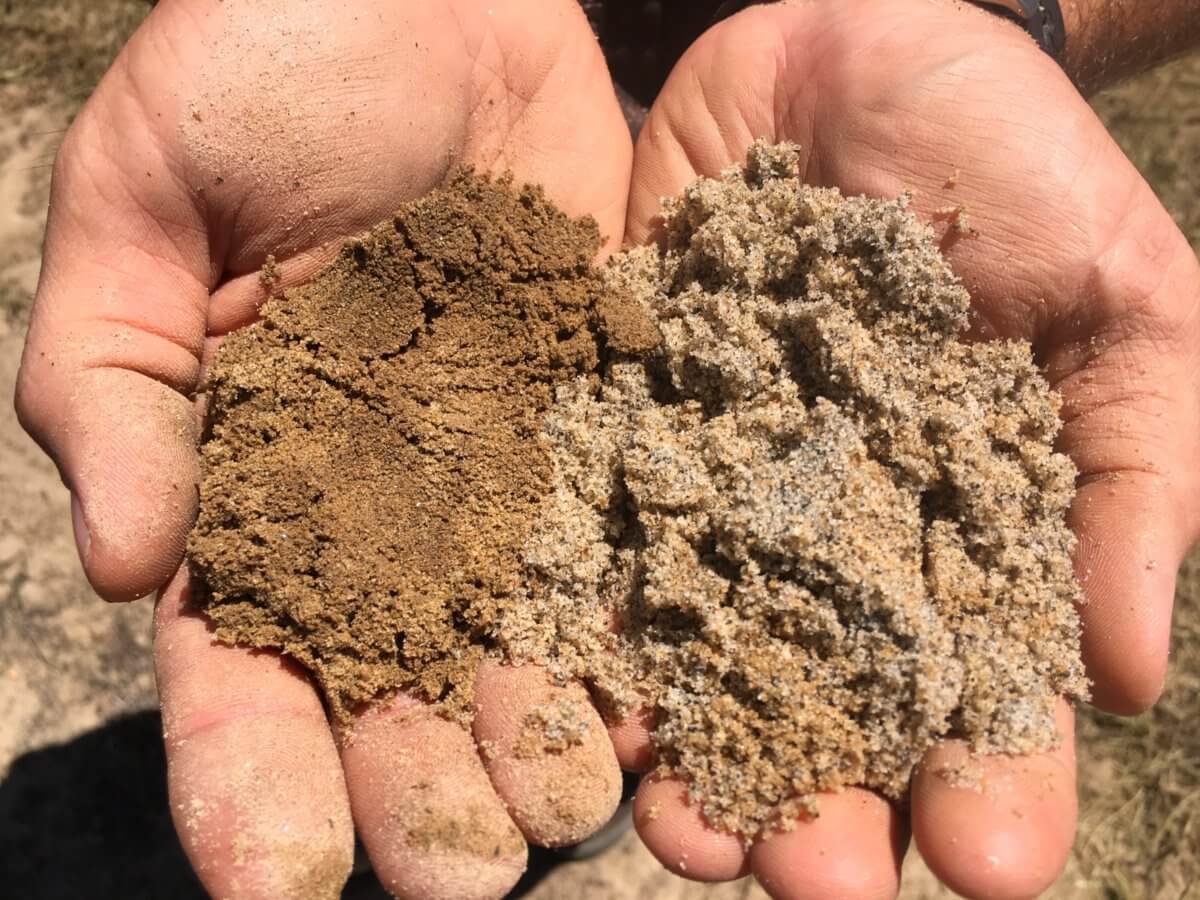
1. Getting the Soil Ready
Once you’ve chosen the right grass for sandy soils, the next crucial step is preparing the soil for seeding.
Contrary to common belief, sandy soils can vary in pH, and it’s essential to adjust it for optimal grass growth.
The ideal pH for most lawn grasses is slightly acidic to neutral, ranging from 5.9 to 7.
To adjust your soil’s pH, start by testing it with a DIY kit or through a local laboratory.
This will guide your amendment process. Adding organic matter, such as compost, is vital in enhancing the soil’s nutrient-retention ability, a key factor for robust grass growth in sandy conditions.
Begin by clearing your lawn area of debris, rocks, and weeds.
Distribute compost evenly across the soil, then integrate it using a tiller to a depth of about six inches.
Since sandy soil is loosely packed, deep digging isn’t necessary.
Be mindful of the salt content in composts, especially if you’re near the sea; in such cases, opt for plant-based composts to avoid excessive salinity.
Incorporating peat into sandy soil is also beneficial. It aids in moisture retention, potentially reducing the frequency of watering needed for your grass.
This preparation sets a strong foundation for successful grass growth in sandy soils.
2. Seeding
Seeding is a cost-effective method to cultivate a lush lawn, though it requires patience for germination.
Most grass types for sandy soils are available in seed form, with some unique varieties possibly requiring online purchase.
To enhance the lawn’s year-round appeal, consider mixing different grass types.
Blending warm-season and cold-season grasses, as well as shade-tolerant and sun-loving varieties, can keep your lawn vibrant throughout the year.
Begin seeding by following the rate recommended on the seed package, as this varies based on grass type and seed concentration.
For uniform growth, split the seeding rate in half and apply in two directions — horizontally and vertically.
Gently rake the soil and lightly cover the seeds to about 1/16 inch deep.
A thin mulch or peat, covering about 50% of the soil’s surface, helps with moisture retention and seed protection.
Regular watering is crucial for seed germination, typically done two to four times daily.
Keep the soil consistently moist, but be careful not to overwater and displace the seeds.
Most grass seeds germinate within 14 days, although this can vary by species.
Adequate watering ensures your grass for sandy soils gets the best start possible.
3. Fertilization
The need for fertilization varies depending on the type of grass, local climate, and soil conditions, especially in sandy soils.
While grass for sandy soils is generally low maintenance and may not require frequent fertilization, there are some considerations to keep in mind.
Sandy soil tends to drain nutrients quickly due to its porous nature. To counteract this, a light fertilization routine is recommended.
Fertilizing your lawn twice a year with moderate amounts can replenish essential nutrients and support healthy growth.
Conclusion
The journey to a lush, green lawn in sandy soils involves selecting the right grass, preparing the soil properly, and giving some care during the growth phase.
With these steps, you can transform your sandy soil into a vibrant, carpet-like lawn.
By selecting suitable grass varieties, preparing the soil appropriately, and following basic care practices like occasional fertilization and regular watering, you can overcome the challenges posed by sandy conditions.
Embrace these steps and look forward to enjoying a lush, green, and healthy lawn that thrives in sandy soil.

![Best Grass for Sandy Soil [5 Grasses that Grow Well on Sandy Lawns]](https://cdn.eathappyproject.com/wp-content/uploads/2021/08/Best-Grass-for-Sandy-Soil-5-Grasses-that-Grow-Well-on-Sandy-Lawns-.jpg)